The average life span of a Canada Goose is 24 years. The size of a goose’s body ranges from 30 to 43 inches with a wingspan between 4.2 to 5.6 feet. Their weight ranges from 6.6 to 19.8 pounds. Canada Geese usually breed at 2 to 3 years of age. They mate for life. Should their mate die, they will find another mate. Geese lay between 5 to 8 eggs per nest. Approximately 75% of the eggs become goslings that survive long enough to learn to fly.
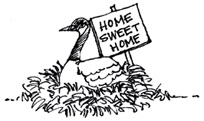 The Home-Body Goose
The Home-Body Goose
Canada Geese build their nests out of twigs, bark and grass and line them with soft feathers. They tend to build their nests on the ground. The incubation period for the eggs is approximately 25 to 35 days. Where a goose is born is where it will continue to return to nest each early spring.
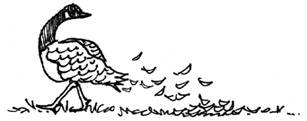 The Molting Goose
The Molting Goose
The molting season is the 8 to 10-week period of time when the geese shed their pin feathers and grow new ones. This time period is between mid-June through August. Since they do not have their pin feathers, they are unable to fly until they grow new pin feathers until around mid July. During this molting time geese will stay on waterways such as ponds, lakes and water retention areas, or man-made ponds to have a safe resting place from predators. Since they are staying in one area, they do considerable damage to landscape and lawn areas near the water.
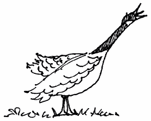 The Loud Goose
The Loud Goose
Geese make loud honking noises when they are entering or leaving an area of water or property. They will also honk to each other to warn of approaching danger.
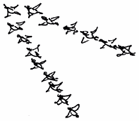 The Active Goose
The Active Goose
Geese can cover 1,500 miles in 24 hours with a helpful wind, but usually travel at a slower rate. They fly as a flock and at times one can view a “V” formation as they fly. As the lead goose in the “V” becomes tired, it trades places in the “V” and can rest its wings as the new leader takes its turn to fly with much effort.
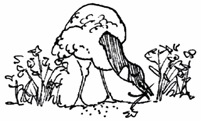 The Hungry Goose
The Hungry Goose
Canada Geese desire a meal of green lawns and beautiful green landscapes. They eat up to 3.5 pounds of grass and its roots each day. They prefer to graze in a close distance to water and in a wide-open area where they can see any danger or predators. They will choose fertilized plants over unfertilized plants.
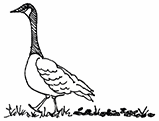 The Messy Goose
The Messy Goose
It takes approximately 7 minutes from consumption of grass and their roots to the excretion of droppings. A goose can produce droppings 25 times per day. An adult goose will produce 2 pounds of droppings per day, so 10 geese can produce up to 20 pounds of droppings in one day on one property.
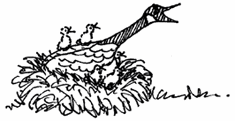 The Mean Goose
The Mean Goose
Geese can be quite aggressive toward humans. They have become accustomed to humans’ presence and don’t fear them. They are especially aggressive should they have goslings in close proximity or a nest with eggs.
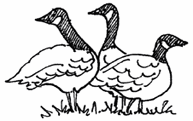 The Growing Goose
The Growing Goose
The population of the Canada Geese is growing. This growth rate is between 10 to 17 percent each year.


